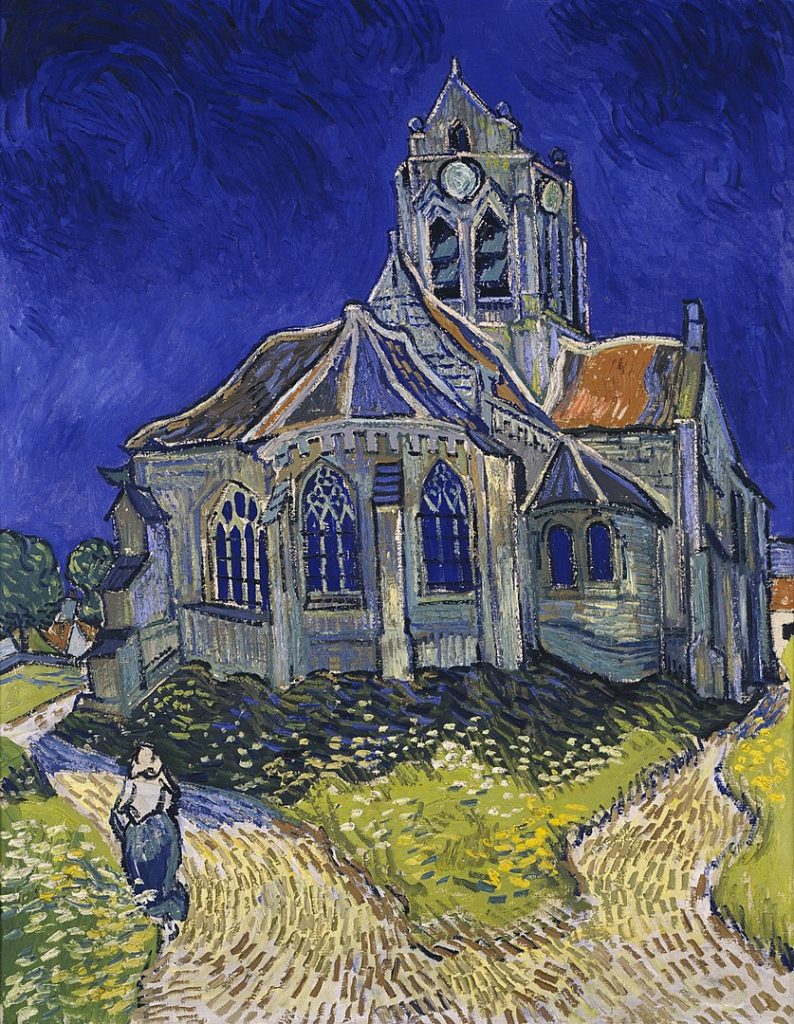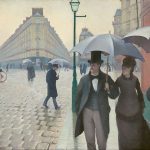
Post-Impressionism marks a transformative period in art history, bridging the gap between the structured approach of Impressionism and the emerging freedom of modern art. This movement is known for its bold use of color, symbolic subject matter, and an expressive brushstroke that captures an emotional depth not always evident in Impressionism. Spanning roughly from the 1880s to the early 1900s, Post-Impressionism gave rise to a range of individual styles, each uniquely contributing to the art world and influencing future artistic directions. This article delves into the origins, characteristics, techniques, and legacy of Post-Impressionism, examining why it remains one of art history’s most fascinating periods.
What is Post-Impressionism? Understanding Its Definition and Origins
Post-Impressionism developed as a reaction to the Impressionist movement. While Impressionist artists sought to capture fleeting moments, focusing on the effects of light on everyday scenes, Post-Impressionist artists looked to convey personal interpretation, emotional resonance, and symbolic meaning. Originating in France in the late 19th century, this movement was driven by artists dissatisfied with Impressionism’s perceived lack of structure and emotional substance.
Impressionism focused on an objective portrayal of the world, often depicting scenes in natural light without elaborate staging. In contrast, Post-Impressionists emphasized subjective experience, exploring themes of memory, emotion, and imagination. This shift laid the foundation for future movements, such as Cubism and Fauvism, and profoundly influenced modern art. Although not a cohesive style, Post-Impressionism represents a shared desire to move beyond the boundaries of previous artistic approaches.
Key Characteristics of Post-Impressionist Art
Despite their varied techniques, Post-Impressionist artists shared several defining characteristics that distinguish this movement from its predecessor. These core traits helped shape the direction of art in the late 19th and early 20th centuries, making Post-Impressionism a bridge between traditional and modern forms of expression.
- Emphasis on Emotional Expression: Unlike Impressionists, who often depicted scenes objectively, Post-Impressionists infused their work with personal feelings and individual interpretations. This resulted in more introspective, emotional art that offered insight into the artist’s inner world.
- Bold Use of Color and Brushwork: Many Post-Impressionist artists employed color expressively, using hues to convey mood or atmosphere rather than striving for strict naturalism. Brushwork became more varied, with artists like Vincent van Gogh using thick, textured strokes to create dynamic and expressive scenes.
- Experimentation with Form and Perspective: Post-Impressionists moved away from realistic perspectives, using distorted forms and unconventional angles to enhance subjective viewpoints. This allowed them to emphasize symbolic meaning over literal accuracy.
- Interest in Symbolism and Abstraction: Many Post-Impressionists explored symbolic themes, often inspired by literature, spirituality, and personal experience. This approach marked a significant departure from the observational nature of Impressionism.
- Departure from Naturalism: Unlike Impressionists, who sought to depict nature as it appeared, Post-Impressionists reconstructed their subjects with imaginative and personal vision, adding layers of emotional or symbolic depth.
The Pioneers of Post-Impressionism: Key Figures Who Defined the Movement
Several artists were instrumental in shaping Post-Impressionism, each contributing a unique approach and style. Among the most influential figures were Vincent van Gogh, Paul Cézanne, Georges Seurat, and Paul Gauguin. Their diverse techniques and perspectives helped define this movement and left an enduring legacy.
Vincent van Gogh: The Master of Emotional Expression
Vincent van Gogh stands as one of the most iconic figures in art history, celebrated for his emotionally charged work and distinctive brushstrokes. Van Gogh’s paintings often portrayed everyday subjects, such as landscapes, sunflowers, and self-portraits, yet his technique made these scenes deeply personal. His use of vibrant colors and swirling lines created a sense of movement and intensity that reflected his inner struggles and heightened sensitivity to his surroundings.
Notable works like The Starry Night (1889) and Sunflowers (1888) showcase Van Gogh’s unique style, emphasizing his personal view of the world around him. Despite producing over 2,000 artworks, he only gained widespread recognition after his death. His innovative use of color and texture has continued to influence generations of artists, making him a pivotal figure in art history.
Paul Cézanne: The Architect of Modern Art
Paul Cézanne is often credited as a bridge between Post-Impressionism and modern art. His exploration of form, geometry, and structure influenced movements such as Cubism and Fauvism. Unlike Van Gogh, Cézanne focused less on emotional intensity and more on the interplay between shapes and colors, which he believed could create a harmonious and balanced composition.
Cézanne’s Mont Sainte-Victoire series, painted between the 1880s and early 1900s, exemplifies his analytical approach. He used layered brushstrokes and simplified shapes to break down complex landscapes, presenting a new way of perceiving depth and volume. His focus on structural form had a profound impact on later artists like Pablo Picasso, who saw Cézanne as a foundational influence.
Georges Seurat: The Innovator of Pointillism
Georges Seurat contributed to Post-Impressionism through his development of Pointillism, a technique involving the use of small, distinct dots of color to form an image. This method, also called Divisionism, was grounded in scientific principles of color and optics, with Seurat believing that placing contrasting colors close together could enhance an image’s vibrancy.
Seurat’s masterpiece, A Sunday Afternoon on the Island of La Grande Jatte (1884-1886), is a prime example of Pointillism. This large-scale painting showcases his meticulous technique, requiring careful planning and execution. Though Seurat died young at the age of 31, his contributions to color theory and artistic technique have left a lasting impact on the art world.
Paul Gauguin: The Visionary of Symbolism and Primitivism
Paul Gauguin’s work exemplified the use of symbolism and a departure from traditional Western art conventions. His paintings are known for their vibrant colors, exotic themes, and exploration of primal spirituality. Gauguin’s travels to Tahiti significantly influenced his style, inspiring him to create works that combined simplified forms with a sense of mysticism and symbolism. His renowned painting, Where Do We Come From? What Are We? Where Are We Going? (1897), reflects his existential thoughts on life, death, and the human experience.
Gauguin’s work was initially controversial for its unconventional subject matter and technique, but his emphasis on symbolism and abstraction became a cornerstone of modern art. His style influenced artists like Henri Matisse and the Fauvist painters, who admired his approach to color and form.
Techniques and Styles: How Post-Impressionists Shaped Modern Art
The Post-Impressionist period introduced several innovative techniques and styles, each contributing to the broader evolution of art. These methods allowed artists to explore unique forms of expression, establishing new visual languages that influenced later movements.
Pointillism: A Scientific Approach to Color
Georges Seurat’s Pointillism technique, best exemplified in A Sunday Afternoon on the Island of La Grande Jatte, highlights the Post-Impressionists’ willingness to incorporate scientific theories into their work. This method of placing individual dots of color forced the viewer’s eye to blend hues from a distance, creating a unique luminosity and vibrancy. The style gained popularity with artists like Seurat’s contemporary, Paul Signac, who expanded on the technique and influenced future generations.
Cloisonnism: Bold Outlines and Simplified Forms
Inspired by cloisonné enameling and stained glass, Cloisonnism involves using bold outlines to separate flat areas of color. Paul Gauguin adopted this technique, particularly during his time in Brittany and Tahiti, to emphasize symbolic content over realistic detail. By simplifying subjects to essential shapes and rich colors, Gauguin’s work in Cloisonnism created a sense of timelessness and mystery, as seen in The Yellow Christ (1889).
Divisionism: Exploring the Science of Perception
Related to Pointillism, Divisionism involves the use of separated color patches to create a cohesive image. Unlike Seurat’s dot-focused Pointillism, Divisionist artists, such as Paul Signac, employed short brushstrokes and dashes, allowing colors to blend optically in the viewer’s eye. This technique offered a slightly more expressive form of Pointillism, contributing to the diversity within Post-Impressionist methods.
Primitivism: A Fascination with “Unspoiled” Cultures
Paul Gauguin’s Primitivist approach, inspired by his travels to Tahiti, involved a fascination with non-Western cultures and their perceived simplicity and spirituality. His use of vibrant colors, stylized forms, and simplified subjects conveyed his idealized view of “unspoiled” cultures. While this perspective has been criticized for its colonial implications, Gauguin’s approach influenced modern art movements that aimed to capture the essence of various cultural identities.
The Legacy of Post-Impressionism: How It Shaped Modern Art Movements
The influence of Post-Impressionism extended far beyond the 19th century. This period laid the groundwork for multiple modern art movements, encouraging artists to experiment with form, color, and technique in ways that had never been explored before. Movements such as Fauvism, Expressionism, and Cubism all drew on the innovations of Post-Impressionist pioneers, transforming these elements into the hallmarks of 20th-century art.
Influence on Fauvism
Fauvism, known for its vibrant, exaggerated colors and bold brushwork, drew heavily from the work of Gauguin and Van Gogh. Artists like Henri Matisse and André Derain admired the emotional depth of Post-Impressionist paintings and adopted similar techniques, particularly the use of non-naturalistic colors to evoke specific moods.
The Seeds of Cubism
Paul Cézanne’s approach to form and structure laid the foundation for Cubism. Artists like Pablo Picasso and Georges Braque were deeply influenced by Cézanne’s work, especially his use of simplified shapes and unconventional perspectives. This foundation enabled Cubists to further deconstruct objects, leading to the abstraction that became central to modern art.
Expressionism and the Inner World
The emotional intensity of Post-Impressionism inspired Expressionist artists to explore psychological experiences on canvas. Van Gogh’s influence, in particular, encouraged artists of the early 20th century to create works focused on the inner world rather than external realities. This approach was central to German Expressionism, where artists like Ernst Ludwig Kirchner and Edvard Munch expanded upon Van Gogh’s emotive style.
Conclusion: Why Post-Impressionism Continues to Captivate
Post-Impressionism’s enduring appeal lies in its diversity, depth, and the groundbreaking innovations that it introduced. This period represented a significant shift in how artists perceived their role, moving from objective representation to personal expression and symbolism. By breaking free from conventional techniques, Post-Impressionists paved the way for modern art, encouraging future artists to innovate and convey their unique perspectives.
The movement’s focus on emotion, symbolism, and abstraction continues to resonate with audiences today. Each work invites viewers to interpret the world and uncover deeper meanings, making Post-Impressionism a celebration of individuality and artistic freedom. As we admire these vibrant works, we can appreciate the courage and creativity that defined this movement, underscoring art’s transformative power across generations.
Key Takeaways
- Post-Impressionism arose as a response to Impressionism, focusing on emotional expression, symbolism, and abstraction.
- Major figures like Vincent van Gogh, Paul Cézanne, Georges Seurat, and Paul Gauguin defined the movement with distinct techniques and styles.
- Techniques such as Pointillism, Divisionism, Cloisonnism, and Primitivism diversified Post-Impressionist art, paving the way for future modern art movements.
- Post-Impressionism influenced major art movements like Fauvism, Cubism, and Expressionism, establishing a foundation for modern art’s evolution.
FAQs
- What distinguishes Post-Impressionism from Impressionism?
- Post-Impressionism focuses on emotional expression and symbolism, using bold colors and abstract forms compared to Impressionism’s naturalistic approach.
- Who are the main artists associated with Post-Impressionism?
- Key figures include Vincent van Gogh, Paul Cézanne, Georges Seurat, and Paul Gauguin.
- What techniques did Post-Impressionist artists use?
- Techniques included Pointillism, Divisionism, Cloisonnism, and Primitivism, each offering unique methods of expression.
- How did Post-Impressionism influence later art movements?
- It inspired Fauvism’s color use, Cubism’s structure, and Expressionism’s focus on emotion, establishing a base for modern art’s evolution.







